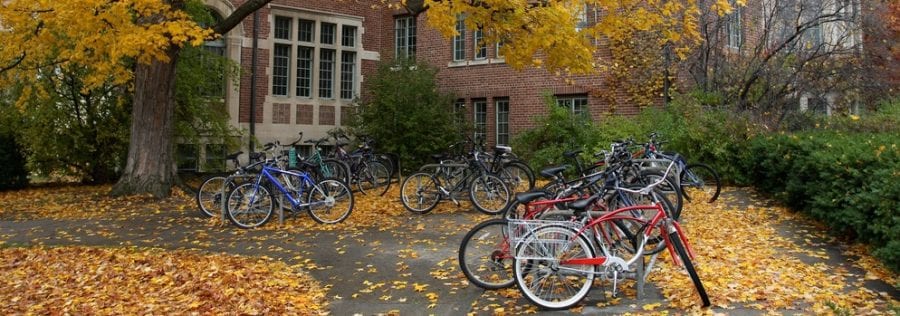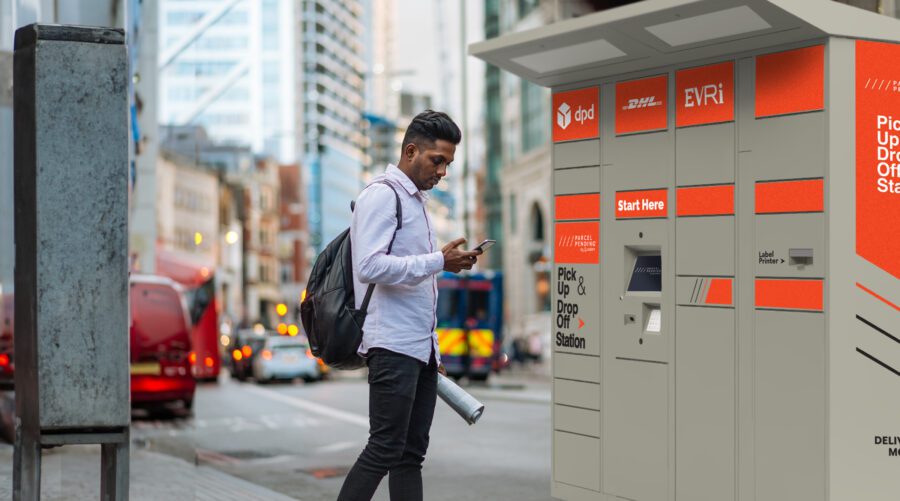
University
College Student Housing Trends to Look Out For
Written by: Parcel Pending
9 Min Read
Published: April 13, 2020
Updated: August 25, 2023
The last decade has marked a noticeable shift in American attitudes toward college. As the prices of tuition, campus housing, and textbooks have risen, greater numbers of detractors questioned whether it was a worthwhile investment. The upsurge of this skeptical sentiment combined with increased competition in the scholastic marketplace has forced colleges to eschew the status quo and provide further student housing amenities.
This, of course, is in order to distinguish their school and attract students.
Although the college student housing trends change annually and may be regionally dependent, there are some universal trends worth noting. From greener living to tech-enabled campus mail centers, here’s what college campuses will adopt next:
10 Game–Changing Trends in College Student Housing
It would be naïve to pretend that a student’s decision about which college they plan on attending hinges entirely upon the school’s academic merits. As most anyone can attest to, there are a host of factors that impact the choice such as:
- Location
- Tuition costs
- Majors offered
- Reputation
- Student living
In the past, dorms were more akin to penitentiaries. They were dour, cinder block buildings, reminiscent of Soviet Era Khrushchyovka (communal apartments). Often, student housing residents were crammed into these unimaginative block rooms like sardines with little thought paid to comfort, pleasure, or leisure. They were roofs and beds—shelter, nothing more. Now, though, the views towards student housing facilities have changed. Forbes writes
Most of us remember in college being crammed with five other people into a nearly falling-over house. The college experience has shifted for the better. Student housing is now a huge draw for universities. Communities are embracing purpose-built student housing projects as a way to move students from community houses to centralized locations that can accommodate a student’s lifestyle.
The following trends are just a few of the ways that colleges are reimagining student living:
#1 Greater Focus on Student’s Mental and Physical Health
Although the campus experience used to be more about churning students through the educational cog, there’s been a shift in how they view their students, particularly their development and emotional well-being. According to a JAMA study, GenZ is in the midst of a suicide epidemic: “The overall suicide rate for this age group has risen by 51% over the past decade. This has been accompanied by increased social media use, anxiety, depression and self-inflicted injuries among young adults and teens.”
Knowing that this is an increasingly mounting issue, universities are looking to prioritize mental and physical health on campuses. Aside from the grim suicide statistic, poor mental health is a hindrance that can impact:
- Academic success
- Decrease GPA
- Increase dropouts
- Lapses in enrollment
In order to combat this, colleges are investing in student mental health centers, counselors, and encouraging open dialogue around this topic. But the battle can be fought on multiple fronts, which is why there has been renewed focus on the links between physical health and mental health.
We are also seeing students’ focus shift toward physical wellness which includes technology. Because of this, fitness centers are crucial and will evolve with online fitness features and cardiovascular machines with interactive abilities, so students can run/ride with their friends nationwide. Further adding to the wellness point, vending machines that once contained soda and chips are now featuring healthy snacks—like pita chips and fresh salad bowls—vitamin water and sports drinks.
Steps that colleges are taking to support physical health include but aren’t limited to:
- 24/7 fitness centers
- Multi-purpose rooms for yoga
- Pools
- Spas
And, if current trends are any indicator, student housing will continue to focus on creating opportunities that contribute to a student’s physical and mental well-being.
#2 Safe Housing Protocols to Prioritize Well-Being
To further support students’ well-being, colleges and universities across the United States have implemented safe housing protocols to improve student safety. Institutions are implementing stringent measures to protect the well-being of their students. These protocols include:
- Regular sanitization of common areas
- Contactless entry systems
- Enhanced ventilation systems
- The adoption of social distancing guidelines.
By creating a secure living space, colleges ensure that students can focus on their studies without compromising their health.
#3 Sustainable Living Dorm Amenities
When GenZ goes to college, they are likely to be far more socially conscious than previous generations, having been raised in a time when the importance of protecting the earth and reducing their ecological footprint has become paramount. These days, a college’s socially conscious philosophy plays a critical role in a student’s decision-making process. Things college students want include being a part of a college that shares their values and mirrors their passion for environmentalism. And colleges are taking notice, making sure that their student housing reflects this. NBC notes:
Most colleges have been implementing campus sustainability initiatives for years, with campus cleanups and recycling efforts that are often led by students. But now they are focusing on the areas where students live, creating green residence halls and dorm rooms that are becoming a hot destination for eco-minded students.
Ways that colleges are fostering sustainable student housing in the residence halls include:
- Energy smart appliances
- LED lighting
- Passive lighting
- Reclaimed wood
- Solar panels
- Rain barrels
- Dorm vegetable gardens
- Composting
- Low-flow showerheads
- Recycling bins
Colleges aren’t stopping their sustainability efforts there. Part of it involves educating students on how to be good shepherds of their earth. Per Clark Nexsen:
Sustainability is a lifetime learning tool, and colleges and universities are leveraging cutting-edge green features and technologies to influence student behavior, promote well-being, provide educational opportunities, and enhance the overall curriculum. Residence halls have a unique opportunity to serve as sustainability learning centers – buildings that actively teach in addition to providing a living space.
#4 Tech-Enabled Campus Mail Centers
In the age of Amazon, online shopping has taken over and completely altered buyer behavior. Now, students order and ship more items to their campus than ever before. From groceries, to textbooks, to medicine, to clothes, practically everything cant be purchased and delivered with the click of a button. While this is convenient for students, the package influx has created a massive problem for university mail centers. According to Business Insider, “the Mansfield, Connecticut, post office — which is where packages headed to UConn are processed — had received 3,000 packages per day headed to campus. This volume of deliveries kept the staff at Mansfield’s post office at work until 3 a.m.”
The average university mailroom is neither equipped for this deluge, nor do they have the staff to handle the never-ending supply of packages. This creates problems for students, such as:
- Packages getting stolen, misplaced, or damaged
- Long lines to wait to grab a package
- Limited pick-up hour windows
For university staff, it represents dozens of hours spent weekly on receiving, storing, organizing, and delivering packages. But they knew this couldn’t last. Something had to be done. This is why an increasing number of universities are adding Parcel Pending smart lockers to their campuses.
Electronic locker systems for colleges make it fast and simple for students to retrieve a package at any time. The built-in app works with the school’s mail system and notifies them when their package has arrived. Once the package is in, students just scan their code, grab their item, and go. This saves both students and faculty staff from the headache that used to be university mailrooms and prevents student internet package issues. In addition, the intelligent parcel locker systems can be covered with custom wraps that match the university’s colors.
#5 Advanced Technology
Advanced technology on campus goes beyond just the mail center. In this digital age, it’s no surprise that advanced technology is also revolutionizing the student housing experience. Colleges are incorporating smart living solutions that help to streamline daily tasks and enhance convenience for students. From keyless entry systems and mobile apps for maintenance requests to automated thermostats and voice-activated assistants, technology is transforming student housing into a seamless and efficient living experience. These tech-savvy amenities cater to the needs of Generation Z students who are accustomed to a digitally integrated lifestyle.
#6 Communal Vs. Private Living Spaces
Dorms serve a variety of purposes from living, to relaxing, to sleeping, to studying. As such, student housing design requires a mix of spaces varying from communal to private. They need to seamlessly balance an academic and social life. College Express notes:
Contemporary students will socialize when and how they please and enjoy having immediate access to various resources such as printing, delivery, and vehicle services without having to own them. While upperclassmen tend to want more privacy, we find these students are comfortable partaking in the broader community as long as getaway spaces are provided, prompting the inclusion of modern academic spaces, cafés, car-sharing services, and community spaces in modern student communities.
As new student houses and dorms are erected, it’s likely that this mindset will be reflected in the designs and schematics.
#7 Fewer Cars on Campus
For years now, there’s been a trend of fewer students bringing their vehicles to campus. This is mostly the result of universities discouraging such behavior—at least for lowerclassmen—by providing them with a variety of transportation options and changing designs. Common actions taken to reduce auto traffic on campus include:
- Campus shuttles – There’s been a concerted effort to increase ridership on-campus shuttles. Universities have done this by increasing the number of shuttles on campus, the frequency of service stops, and apps that help students monitor shuttle service.
- Reducing parking – Many colleges are consciously providing fewer parking spaces, particularly in the middle of campus. Now, new parking lots are pushed to the edges of the school grounds and vacant lots are turned into green spaces in order to improve walkability.
- Banning cars for underclassmen – Although this isn’t universal, there are several academies that don’t allow underclassmen to have cars on campus. For certain schools, especially larger ones that are basically cities in and of themselves, this is a reasonable option since students have everything they could need or want within walking distance.
- Adding bike racks – These days, a walking path on a college campus might look like the Tour De France. Hundreds of students zip around on bikes, electric scooters, and skateboards as they go about their everyday affairs. And colleges are encouraging this type of eco-friendly behavior by building bike racks all over campus, including outside the dormitories.
#8 Inclusive Housing Features
In 2023, student housing is evolving to become more inclusive, ensuring that individuals of all backgrounds and abilities can thrive in a college environment. Housing facilities are now designed to meet the needs of students with cognitive disabilities, providing accessible features such as wheelchair ramps, elevators, and sensory-friendly spaces. These thoughtful design elements foster a sense of belonging and ensure that all students have equal opportunities to succeed academically and socially.
#9 International Student Support
As the number of international students continues to grow, colleges are increasingly focusing on providing housing options that cater to their unique needs. Specialized programs and facilities aim to ease the transition for international students, offering language support, cultural exchanges, and dedicated international student housing units. By creating a supportive environment, colleges encourage global diversity and foster cross-cultural interactions, enriching the overall college experience for everyone.
#10 Communities Beyond Campus
College towns have always been synonymous with the higher education experience, and in 2023, they are thriving more than ever. These vibrant communities, when successfully integrated with the student experience, offer a wide range of housing options, entertainment venues, and social opportunities, creating a rich tapestry of experiences for students. True college towns can provide students with a sense of belonging, foster local partnerships, and often serve as incubators for entrepreneurship and innovation. Higher education institutions should look to cultivate relationships with civic leadership (if they are not doing so already) to ensure students feel welcome in any nearby towns.
Changing Trends in College Student Housing
From high-tech mailrooms to sustainable dorms, universities are continually seeking ways to entice new students and improve campus life. These exciting trends share a similar purpose—to create an atmosphere conducive towards both socialization and academic pursuit. And if this is just the beginning, it’s hard to imagine how different college student housing may look like in the next decade alone.
To learn about how to promote schools for incoming freshmen, speak with a Parcel Pending representative today.





